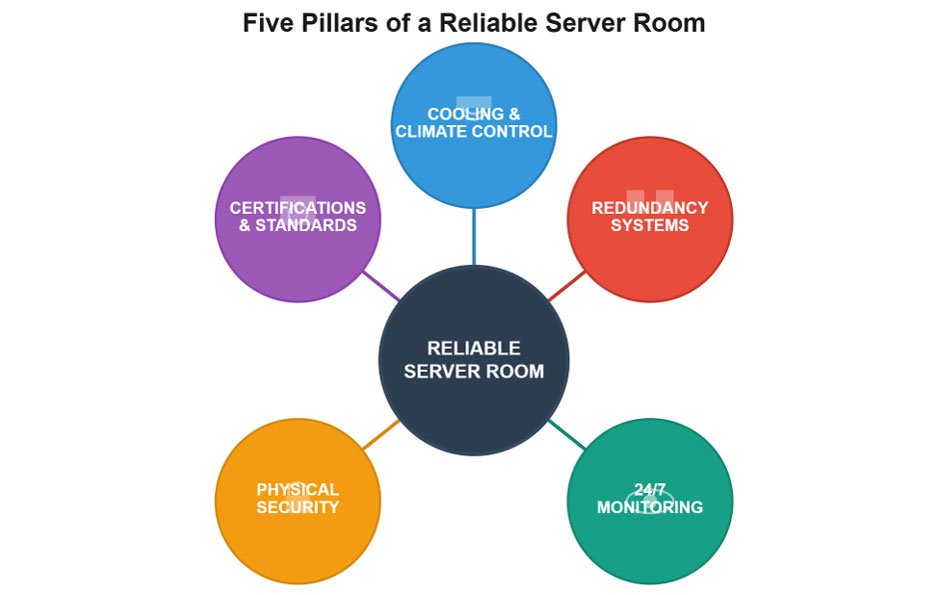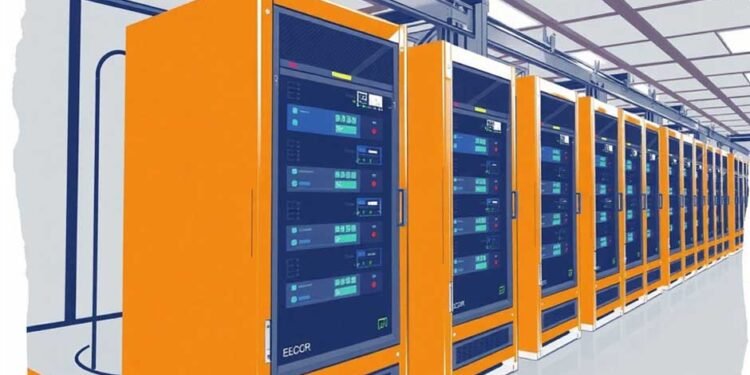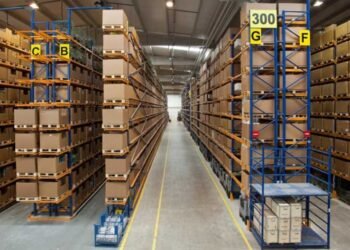Imagine your entire company relying on a single cable, and someone trips over it.
In a professional server room, this simply can’t happen, because every component has a backup — and a backup for that backup. From server room air conditioning to redundant power supplies and real-time monitoring, modern data infrastructure resembles a space station more than a warehouse of computers. So, what exactly makes up a truly reliable solution?
The five pillars mentioned in the title form the foundation of every genuinely dependable server room, creating a system where the failure of one component doesn’t lead to disaster. This isn’t a luxury — it’s a necessity. Today, data is more valuable than gold, and its loss can bring even a stable company to its knees. Let’s take a closer look at each of these pillars and find out why their combination is what separates a professional solution from mere improvisation.
First Pillar: Server Room Air Conditioner as the Front Line Against Overheating
Servers generate heat as a byproduct of their operation, and not just a little. A single standard rack can produce as much heat as several household heaters running at full power. Without adequate server room cooling australia, temperatures can rise within minutes to levels where processors throttle performance or shut down entirely.
However, a server room air conditioner means more than just a powerful unit mounted on the wall. It’s a complex system. While regular office air conditioning operates within a tolerance of several degrees, server room systems maintain temperature with precision down to tenths of a degree. Air humidity is just as carefully regulated—too dry, and the risk of static electricity increases; too humid, and you face the danger of condensation.
Second Pillar: Redundancy for Everything That Can Fail (and Even What Shouldn’t)
In everyday life, we get by with a single phone, one computer, and one internet connection. In a professional server room, that approach is like playing Russian roulette—the question isn’t if something will fail, but when. That’s why the N+1 rule applies here, and often even N+2 — every critical system has at least one active backup.
Power supply as the beginning and the end
A power outage can bring the entire infrastructure to a halt within a second. That’s why modern server rooms use:
- two or more independent power feeds,
- UPS systems (uninterruptible power supplies) with sufficient capacity,
- diesel generators for long-term outages,
- automatic switches between sources without interrupting the supply.
Connectivity without dead ends
Internet connectivity is another critical point. A proper setup includes:
- at least two independent internet providers,
- physically separated fiber-optic routes,
- automatic switching in case of primary link failure,
- guaranteed bandwidth for each customer.
Third Pillar: Server Room Monitoring “Sees” Problems Before They Happen
Imagine a pilot flying without instruments–unaware of fuel levels, altitude, or whether the engines are working properly. That’s exactly what a server room without monitoring looks like. Modern monitoring systems track dozens of parameters in real time and can predict problems before they even occur.
Server room monitoring includes tracking temperatures in different zones, air humidity, energy consumption of individual racks, cooling system load, UPS battery status, or even vibrations that may indicate issues with fans. Companies like TTC Teleport use advanced systems that combine physical sensors with predictive analytics–for example, if an air conditioning unit starts behaving abnormally, technicians know about it days in advance and can schedule maintenance without any downtime.
Fourth Pillar: Physical Security Protects Against External and Internal Threats
The best firewall in the world won’t help if someone walks off with an entire server under their arm. That’s why physical security in a server room works across multiple layers:
- biometric access control (fingerprints, facial recognition),
- mantrap entries to prevent multiple people from entering at once,
- continuous video surveillance with recording archives,
- motion detectors and perimeter breach sensors,
- an access logging system that tracks who entered, when, and why.
Fifth Pillar: Certifications and Standards as a Guarantee of Quality
A truly professional server room in a data center doesn’t follow homegrown rules, but international standards. Certifications like ISO 27001, Tier III, or Tier IV guarantee that the operator adheres to strict procedures in the areas of security, availability, and maintenance. These standards define everything from the minimum height of raised floors to protocols for handling emergencies.

The Five Pillars Together Create a Fortress for Data
The reliability of a modern server room doesn’t depend on a single “super-capable device,” but on the orchestrated interplay of all five pillars. When each component functions as part of a greater whole and has its own backup, the result is an infrastructure that simply cannot be allowed to fail. And that’s exactly what sets a truly professional solution apart from just a room full of computers.












